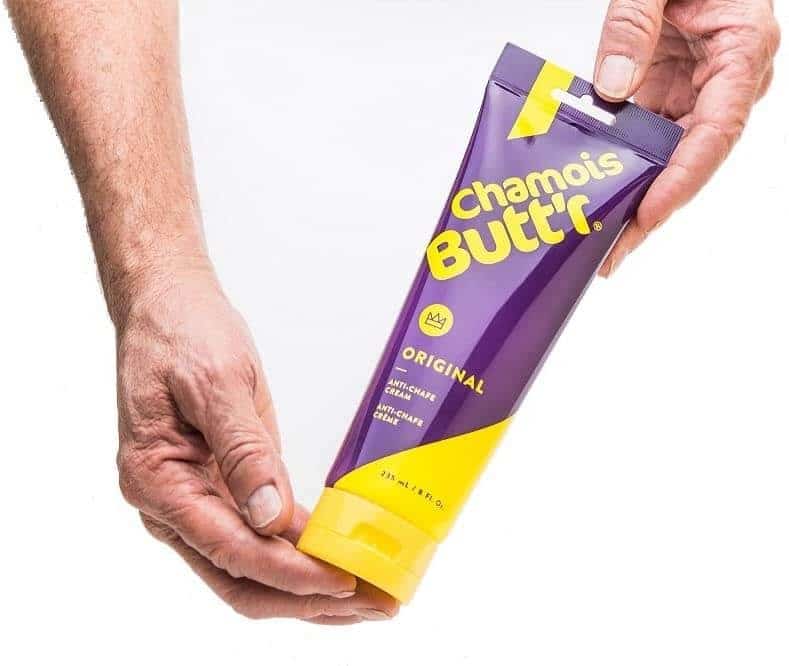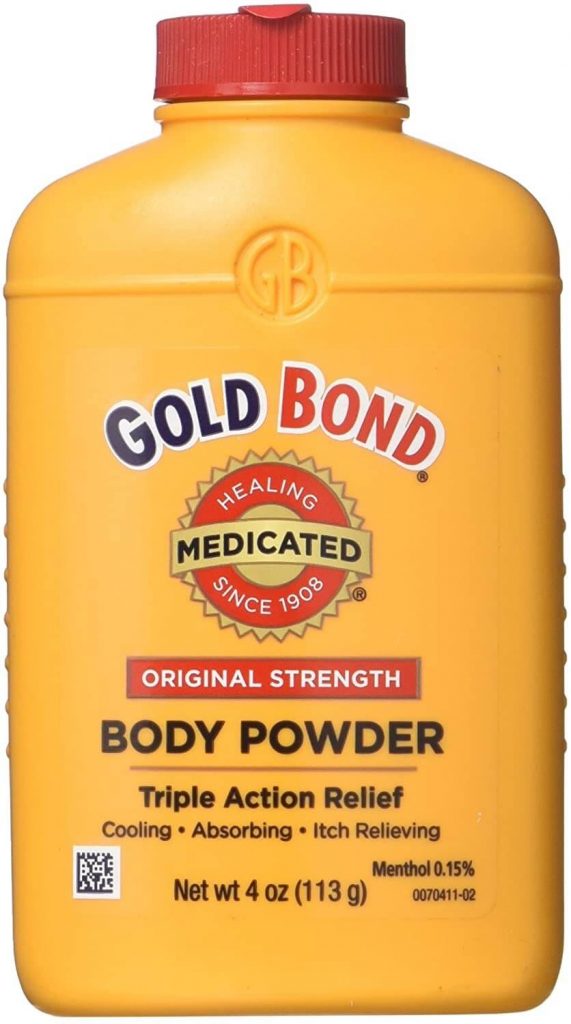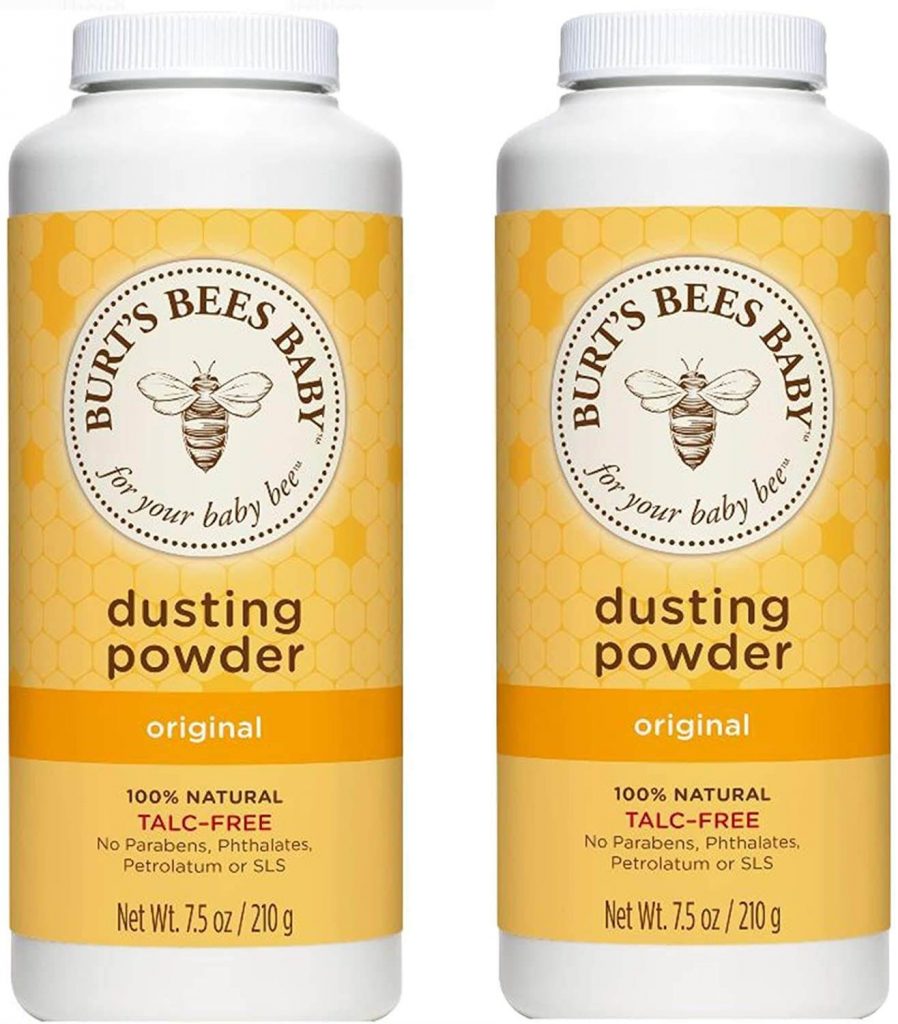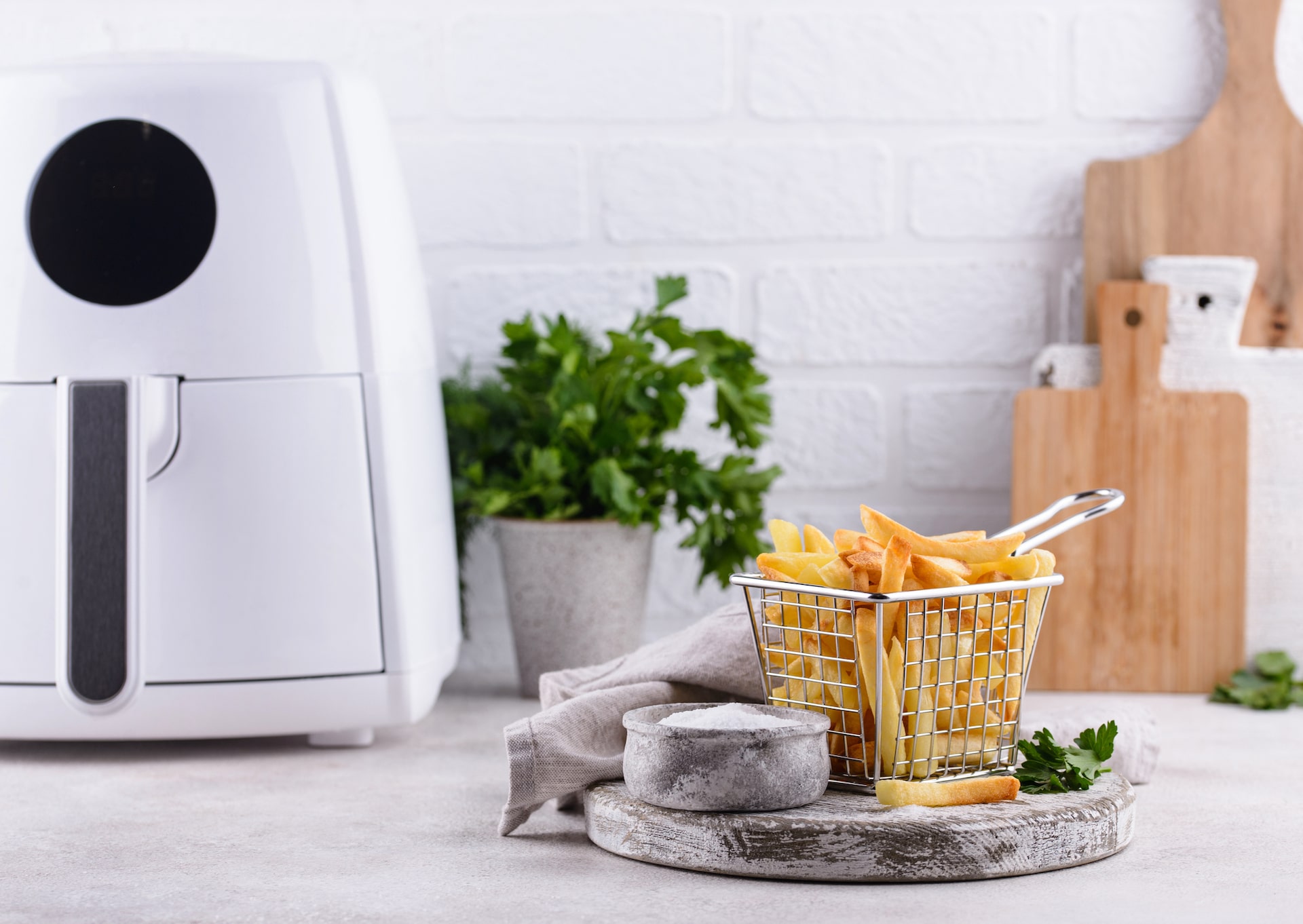This article may contain affiliate links. We may receive a commission for purchases made through these links. Privacy Policy.
We’re officially in the dog days of summer. Those hot, sultry weeks when the humidity soars and the chances of thunderstorms and chafing are high. If you’ve ever had your skin rubbed raw by a piece of clothing or even other body parts, you know just how painful it can be.
The redness. The burning The rashes and blisters. Ouch!
Heat, humidity and excessive sweating are a few of the culprits when it comes to chafing. But things like loose-fitting clothing and non-breathable fabrics can also be factors when it comes to this common form of contact dermatitis.
Basically, all chafing is due to friction on your skin. Sometimes the friction is caused by an article of clothing like a sports bra, running shirt or bathing suit. But even your thighs scraping against each other can wear away the skin and turn walking into a not so subtle form of torture, especially in the hot weather.
Underarms, thighs and the nipple and groin area seem to be especially vulnerable. Yes, there are a myriad of ways chafing can make you say ouch.
Fortunately, there are also a lot of ways to prevent and treat it.

How To Prevent Chafing
So in the spirit of keeping our summer days carefree and owie-free, we’ll give you some tips on the best ways to avoid chafing. And for those already suffering from raw skin, it will also cover off how to treat chafing.
First, let’s talk about prevention..
1. Keep your skin moisturized
Dry skin is actually more prone to chafing than well-moisturized skin. That may sound strange considering wet conditions exacerbate chafing, but it’s true. So what’s the deal?
Well, when your skin is well hydrated, it’s also more pliable. And that makes it less vulnerable to rubbing. Dry skin, on the other hand, is more easily damaged.
So slather on those lotions and creams, friends. Your skin will thank you for it!
2. Prep especially vulnerable areas with balms
As mentioned, sensitive areas like the armpits, thighs, the groin area and nipples are especially vulnerable to chafing. Here it helps to create a barrier between your skin and your workout gear or other clothing.
Here are a few products to help you avoid the burn:
Body Glide Anti-Chafe Balm

Body Glide is an anti-chafing balm created for athletes, but it can also be a lifesaver for anyone who’s suffered the pain of chafing. Conveniently designed to glide on like a deodorant, it’s also petroleum-free and stain-free.
Gold Bond Friction Defense

This glide from Gold Bond also goes on like a deodorant and is gentle enough for even sensitive skin.
Chamois Butt’r Original Anti-Chafe Cream

Anti-chafe balms also come in the form of creams. Chamois Butt’r is a popular choice among cyclists, runners and swimmers, but you don’t need to be an athlete to reap the benefits.
Free of parabens, artificial fragrances and colors, you can use it anywhere you experience chafing.
Petroleum Jelly

Petroleum jelly is a little greasy to use every day. But when you don’t have anything else on hand, it will definitely do the trick as it does repel sweat and lubricate the skin.
Vaseline, Aquaphor or just the generic store-bought brand will all do in a pinch.
Whatever your product of choice, the point is to reduce friction.
Related: The 10 Best Men’s Underwear [What’s Your Skivvie Situation?]
3. Use Powder
Powder absorbs excess water that can lead to chafing. And there are plenty of options. From the classic Gold Bond Medicated Powder to talc-free versions, it’s another smart way to prep your skin.
Put some on before you get dressed and reapply it throughout the day if needed.
Gold Bond Medicated Powder

This triple action Gold Bond powder cools, deodorizes and absorbs moisture.
Fromonda Body Powder

Looking for a talc-free version? Try this natural option with arrowroot powder, baking soda and kaolin clay.
Burt’s Bees Baby Natural Dusting Powder

If it’s good enough for a baby’s bum, it’s good enough for you. Dust that baby powder where needed to protect your skin.
4. Wear breathable, sweat-wicking clothing
When it comes to chafing, sweat is your enemy. Sweat-wicking or moisture-wicking clothing is made to absorb excess moisture and also dries faster than other fabrics. Cotton, on the other hand, only traps it next to your skin.
Yes, I like many people adore natural fabrics. But when you’re trying to avoid chafing, synthetics are your friend!
5. Pay attention to clothing fit
Loose clothing may seem more comfortable, but unfortunately, it also traps moisture. Your best bet is to choose a fit that’s snug without being overly tight.
Yes, I realize this kind of feels like the Goldilocks version of clothing, but to avoid chafing, you need a fit that’s juuuuust right.
Also, if your thighs rub together, be sure to choose shorts with a longer inseam to protect your skin.
And one more pro tip: buy tag-free clothing or cut them out. Tags may seem like a small detail, but they can actually cause a lot of pain when they rub against your skin.
6. Try thigh bands or chafing shorts
Many people are well acquainted with how painful it can be when your thighs rub together. Affectionately called “chub rub” by some, it’s a lot more serious than it sounds.
If this applies to you, don’t worry!
You’re not alone, and there are solutions. Elastic thigh bands are made to wear around the legs and protect your skin. Slip them on under your dress, pants, shorts or athletic gear to protect yourself from thigh chafing.
Pretty Little Thing Anti-Chafing Bands

Slip these bands under any look to protect your inner thighs.
Chafing shorts are another option if you want a little more coverage. And even snug fitting biker short or compression shorts will do the trick.
7. Stay away from harsh detergents
If you have extra sensitive skin, you’ll also want to avoid any potential irritants. Try washing your clothes with fragrance-free, all natural products to protect sensitive areas.
8. Pick the right deodorant
Again, this applies more to sensitive skin types in general. To cut back on chafing, try choosing a hypoallergenic, fragrance-free and aluminum-free deodorant. Your armpits will be better off!
9. Careful Of Your Extra Gear, Athletes!
Phone armbands, backpacks and heart monitors are useful on a run, cycle or hike, but they’re also potential sources of chafing. To cut back on friction, apply a balm or cream on any areas they come in contact with.
Also be sure to tighten them enough, so they don’t bounce around, but not so tight that they cut into your skin.
10. Break out the band-aids, runners
Runners nipple. Any guy who’s bled through his shirt on a long run will tell you just how bad it feels. If this is one of your sensitive areas, try using band-aids or tape to avoid this particular brand of hell.
11. Try a little manscaping, dudes
Men are just hairier than women. Mostly. And while a little extra hair can protect your skin, too much can trap moisture against it. And as we all know, moisture and friction equal chafing.
If you’re an especially hairy guy, you may want to consider a little manscaping in sensitive areas. Just be careful not to take too much off as that can also irritate your skin.
Just like clothing fit, this is an area where you have to get it juuuuuust right.
12. Stay hydrated
Staying hydrated may not seem like the most obvious way to prevent chafing, but it is a factor. When we’re dehydrated, our sweat is actually saltier. And salt is irritating to the skin. Combine that with a little friction, and you’re definitely going to get rubbed the wrong way.
Just another good reason to keep downing that H2O!
13. Rinse off salty water at the beach
If you’re lucky enough to get to the beach this summer, be sure to rinse off between swimming sessions. Salt combined with a tight fitting bathing suit can be irritating to the skin.
A quick douse between dips can help prevent chafing and ensure your summer fun doesn’t come to a painful end.
Men in particular are especially vulnerable to rashes from bathing trunks. That’s why a mother and son team created NoNetz swimwear for men and boys. Designed with no mesh and an anti-chafe liner, they’re easier on the skin and make sure that guys can chill and enjoy their day on the beach.
Related: The 23 Best Skincare Subscription Boxes for Men and Women [For All Skin Types]
How To Treat Chafing

If you’re already suffering from chafing, it’s time to go into treatment mode to keep it from worsening. Here’s a step by step breakdown on how to calm and soothe your skin.
First take a shower
When treating wounds, some people’s first instinct is to reach for alcohol or hydrogen peroxide to clean them. But that can actually do more harm than good.
Instead, take a shower to clean the affected area. Just make sure the water is cool to lukewarm as hot water could make the problem worse.
You’ll also want to use a very mild soap to avoid further irritation. This one from Cetaphil cleans off sweat and bacteria without irritating your skin.
Avoid soaps with heavy fragrances or any cleansers with active ingredients like glycolic acid.
Once you step out of the shower, you’ll want to pat, not rub, your skin dry. However, you’d probably figure that one out yourself after a couple of painful rubs.
Apply soothing products
Now it’s time to grab the ointment and start slathering that poor skin of yours.
Desitin or A+D Zinc Oxide cream may be used for diaper rash, but they’re also great for babying chafed skin. Plus they’re anti-bacterial!
Looking for a more natural option? Aloe Vera is great for skin lesions. Just stay away from brands with added fragrance.
Another home ready is coconut oil. It’s naturally soothing and it’s also anti-bacterial. My husband happens to be a frequent sufferer of the summer chafing season. When not even doctor prescribed creams worked for him, I suggested he go green.
I’m not exaggerating when I say coconut oil worked miracles for him. Sometimes simple works better.
Another personal fav of mine is Country Comfort GoldenSeal-Myrrh Herbal Savvy. I’ve used this on many different occasions for cuts and scrapes and can’t believe how quickly my skin heals with it. This all-natural balm disinfects and also helps with inflammation.
Now get your comfy clothes on
Once you’ve applied your potions and lotions, it’s time to chill. At this point loose, non-clingy clothing is what you’re going for. The softer the better!
Also, make sure whatever you wear is breathable. The last thing you want is to start sweating again!
More on aftercare
Obviously, you’ll also want to avoid touching the affected area while you’re healing. Tempting as scratching may be after a few days, don’t do it!
If you’re really in pain, an ice pack covered in a towel can also bring relief.
Chafe marks generally scab over in a few days and heals up in about a week. While you’re recovering, be sure to avoid any activities or clothing that could irritate your skin again.
And if you’re going to be out in the sun, be sure to protect the area.
With time and a little TLC, your skin should soon be back to normal.
However, if your rash worsens or you see signs of swelling, pus or redness that spreads away from the wound, you may have an infection.
In that case, you’ll want to book an appointment with your doctor who may prescribe an antibiotic.
Related: The Top 7 Women’s Workout Leggings
The Raw Truth
Well, there you go, everything you wanted to know about chafing and then some.
The main thing to remember is that chafing is caused by moisture and friction. By taking just a few preventative measures, you can save yourself, your armpits and other delicate bits from a world of pain. Inner thigh chafing is something no one wants to endure, but there are ways to prevent irritated skin on all parts of your body!
So prep that skin with some balms, be careful about clothing choices and stay hydrated.
And if you still end up with a little chafing, be sure to baby that skin you’re in for a few days. After all, it’s the only one you have!
You might also be interested in: The 7 Best Shapewear [For Slimming Down Every Area]
Sherry De Alba
view postSherry De Alba
Sherry is a freelance writer who worked as an actor before transitioning to an award-winner career in advertising. During a vacation to Mexico, she fell in love and never left. Sherry (aka Cherita) now spends her time bouncing between the US and Mexico writing, running, cooking, meditating and exploring lots of cool stuff on the other side of the wall.
view post








